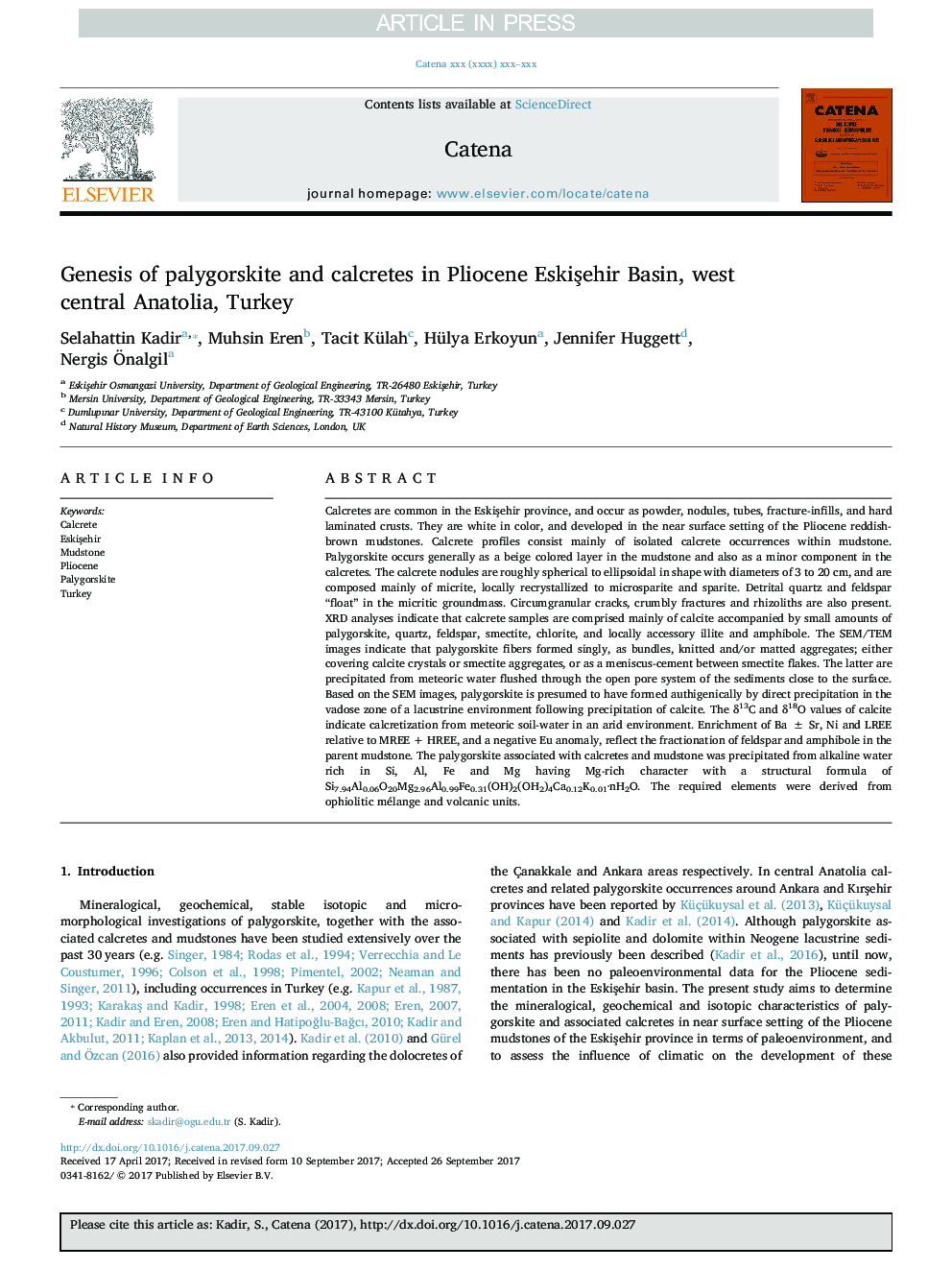| Article ID | Journal | Published Year | Pages | File Type |
|---|---|---|---|---|
| 8893447 | CATENA | 2018 | 17 Pages |
Abstract
Calcretes are common in the EskiÅehir province, and occur as powder, nodules, tubes, fracture-infills, and hard laminated crusts. They are white in color, and developed in the near surface setting of the Pliocene reddish-brown mudstones. Calcrete profiles consist mainly of isolated calcrete occurrences within mudstone. Palygorskite occurs generally as a beige colored layer in the mudstone and also as a minor component in the calcretes. The calcrete nodules are roughly spherical to ellipsoidal in shape with diameters of 3 to 20 cm, and are composed mainly of micrite, locally recrystallized to microsparite and sparite. Detrital quartz and feldspar “float” in the micritic groundmass. Circumgranular cracks, crumbly fractures and rhizoliths are also present. XRD analyses indicate that calcrete samples are comprised mainly of calcite accompanied by small amounts of palygorskite, quartz, feldspar, smectite, chlorite, and locally accessory illite and amphibole. The SEM/TEM images indicate that palygorskite fibers formed singly, as bundles, knitted and/or matted aggregates; either covering calcite crystals or smectite aggregates, or as a meniscus-cement between smectite flakes. The latter are precipitated from meteoric water flushed through the open pore system of the sediments close to the surface. Based on the SEM images, palygorskite is presumed to have formed authigenically by direct precipitation in the vadose zone of a lacustrine environment following precipitation of calcite. The δ13C and δ18O values of calcite indicate calcretization from meteoric soil-water in an arid environment. Enrichment of Ba ± Sr, Ni and LREE relative to MREE + HREE, and a negative Eu anomaly, reflect the fractionation of feldspar and amphibole in the parent mudstone. The palygorskite associated with calcretes and mudstone was precipitated from alkaline water rich in Si, Al, Fe and Mg having Mg-rich character with a structural formula of Si7.94Al0.06O20Mg2.96Al0.99Fe0.31(OH)2(OH2)4Ca0.12K0.01·nH2O. The required elements were derived from ophiolitic mélange and volcanic units.
Related Topics
Physical Sciences and Engineering
Earth and Planetary Sciences
Earth-Surface Processes
Authors
Selahattin Kadir, Muhsin Eren, Tacit Külah, Hülya Erkoyun, Jennifer Huggett, Nergis Ãnalgil,
